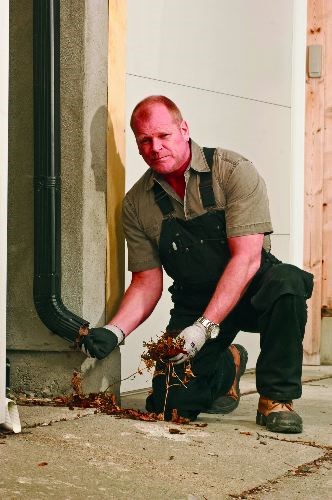A lot of people think winter is the season that really puts our homes to the test. But spring is no lightweight; it has its own set of challenges. They say April showers bring May flowers, but that's not the only thing they bring. They can also bring water damage.
We always want to prepare our homes for the winter months. And spring thaw is the true test of how successful we were at winterizing our homes. Did we check the foundation for cracks and fix any moisture problems? Did we check the weather stripping around our exterior doors? Did we clean our eavestroughs? Did we make sure the flashing and caulking were in good shape?
I'm all about thinking ahead and preventing future problems. Why? Because preventing is always cheaper than fixing. When the temperatures start to rise in the spring, it will be obvious what you did and what you didn't do in the fall to prepare.
Winter is harsh, but it's also dry, and the weather is somewhat predictable. But spring brings all kinds of weather. Some days will be
unusually warm and others will seem bitterly cold. We'll have rain one day, sunshine the next, and - I hate to say it - maybe even a
couple more snowfalls.
We have to remember that our homes respond to their environment. Homes expand as it gets warmer, and they contract as it gets cooler. This expansion and contraction is going to test the construction of your home throughout the season. And how it reacts depends on what's behind the walls and beneath the floors.
For example, you may start to notice cracks in your drywall, tile or grout. Or hairline cracks above doors and window frames. Certain floors might start to creak more than others, or even buckle in more extreme cases. Or outdoor patios and steps might have shifted and become unlevel.
All of these cases require immediate attention. Depending on how serious the problem, you will want to consult an experienced contractor. So take some time this spring to check over your house. A little bit of maintenance now can pay off in the long run.
So, what are the key things you should be looking for? Well, I can tell you what sort of things I've started to look at in my own home.
For starters, we need to check the water level and power of our sump pumps. We get a lot of precipitation in the spring, so we need to think about how the increase in moisture levels will affect our homes. If your basement floods a lot every spring, you should seriously consider getting a heavy-duty pump that can handle the flow.
We also have to think about where the water from the sump pump is being directed. I see a lot of sump pumps draining the water outside, right next to the foundation wall - which is pointless. The water that was pumped out of the basement will just work its way back in. The water needs to be pumped several metres away from your foundation wall - and anyone else's.
Another major concern is sewer backup. If we get too much rainfall, or if there's a drain blockage, water from the sewer can back up into the home.
I recommend getting a professional plumber to check the drains before April showers to make sure there aren't any blockages. And if there are, the solution is already there: Have the plumber clear it out.
Next time you're outside, check fencing, deck railings and steps. If they need repair or replacement, get on it. These are safety hazards. In fact, if someone gets hurt because of poorly maintained steps or railings, you're the one who's going to hurt. Why? Because you can be fined or sued.
Spring is also one of the most popular times to repair roofs, for two reasons. The first is, like other materials, shingles contract and are brittle in the winter. If you install them then, by spring, your shingles can start to buckle or crack.
The second reason is that roofers are just like anybody else: They don't like working in extreme weather. So you want to avoid getting your roof repaired during the cold winter, or brutally hot summer temperatures. Otherwise, you know what will happen? They'll rush through the work, just to get some relief from the weather.
Other things that will help bring our homes up to speed with spring include: inspecting wood siding and trim for signs of water deterioration, and clearing our gutters, yet again, to prevent a blockage that can cause water to back up onto our roofs or overflow down the siding.
This is also a good time to check smoke and carbon-monoxide detectors, and vacuum the lint from the dryer duct. A lot of people don't know this, but lint can be a major fire hazard.
Maintaining your home may seem like a chore, especially when you're tempted to sit back, relax and enjoy the weather. But remember: Spring maintenance doesn't benefit anyone but you. So do yourself a favour: Stay ahead of the game, get the work done, and you can prevent a couple of emergency repairs.
Catch Mike in his new series, Holmes Inspection, airing Thursdays at 8 p.m. ET/PT on HGTV. For more information, visit www.hgtv.ca.
For more information on home renovations, visit makeitright.ca.



